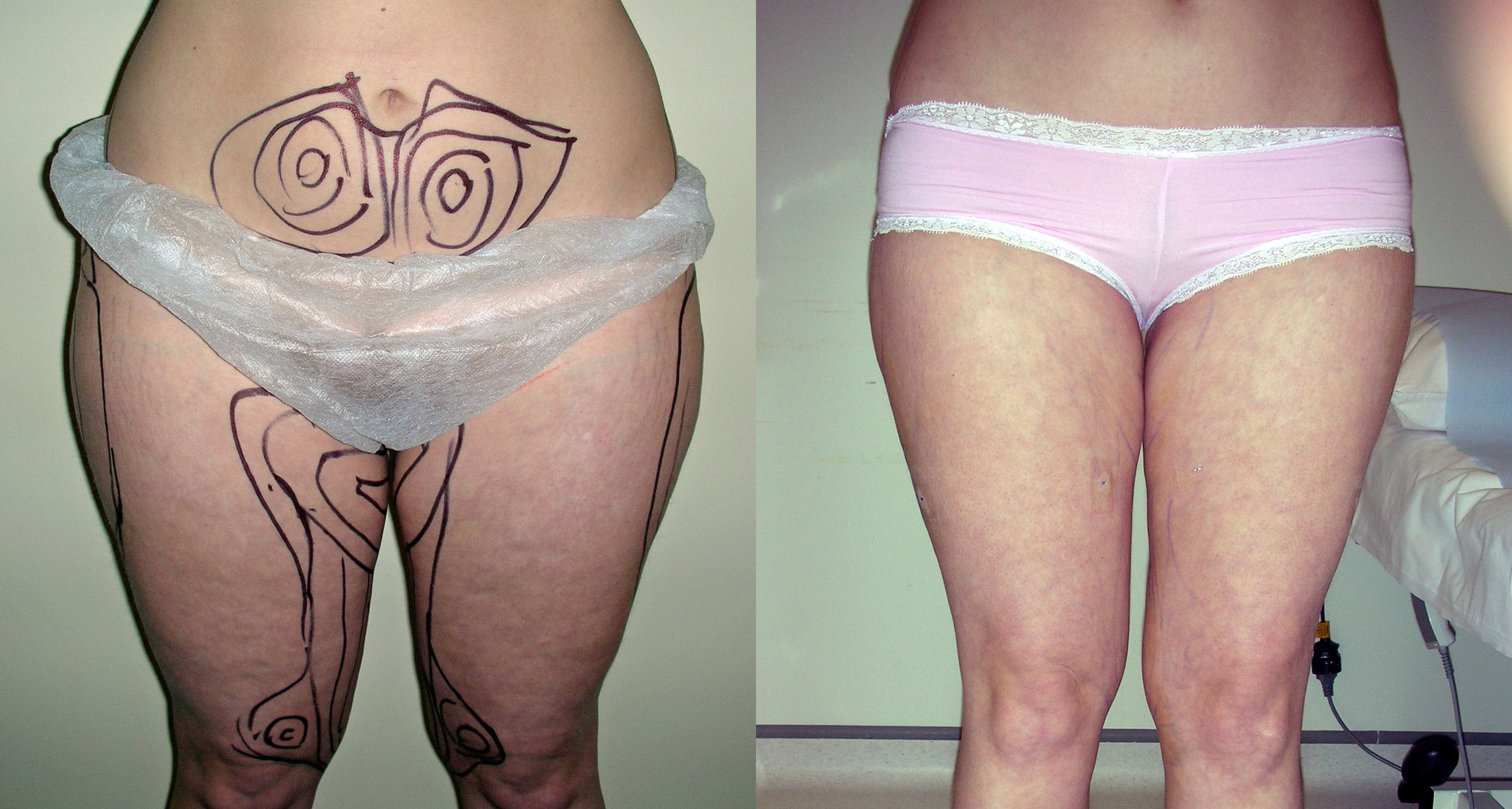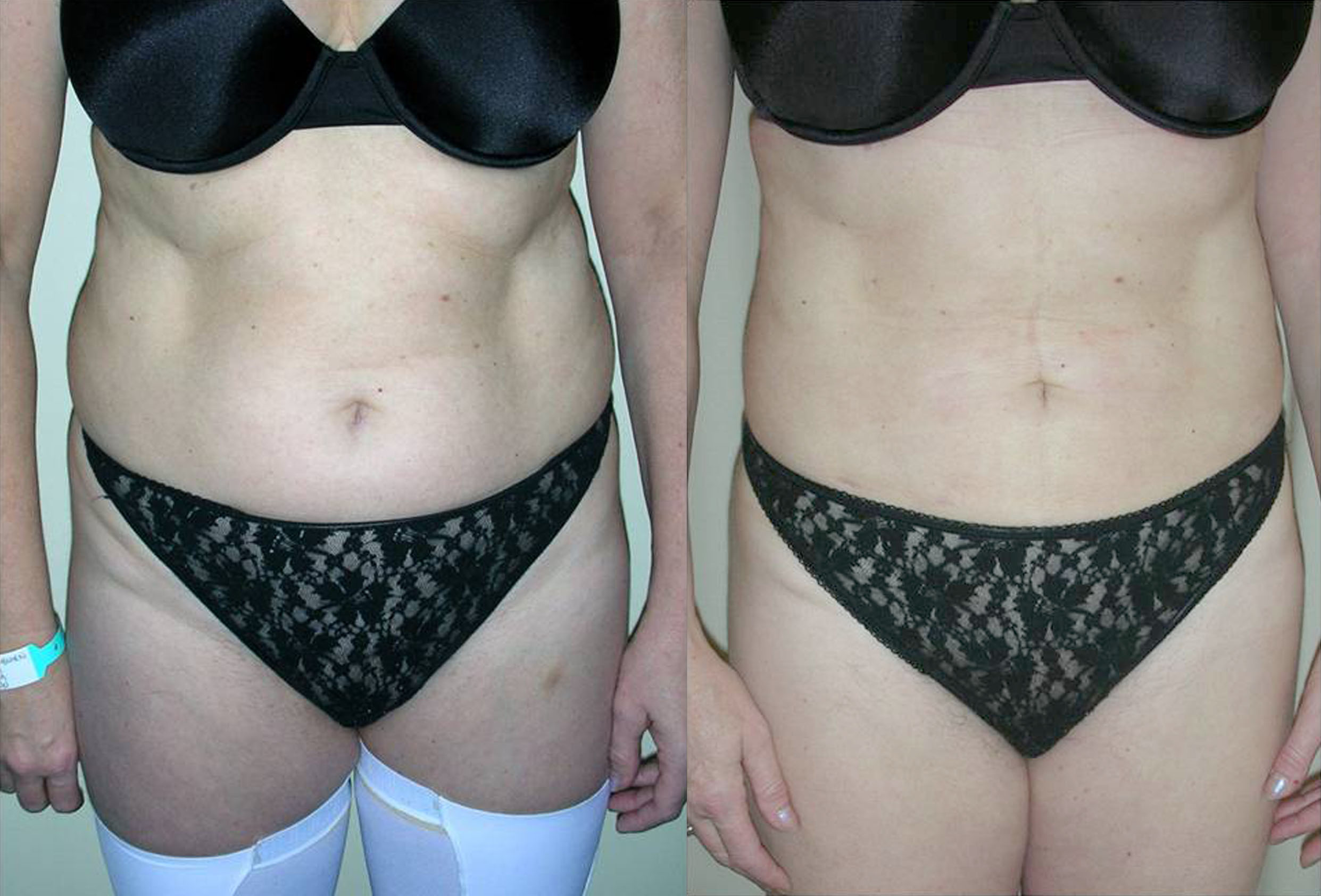Risks and limits of surgery
How can I prepare for surgery?
Always disclose everything when asked about your medical history including anything you take whether prescribed or not.
Do not take any medications that might increase the risk of bleeding, for example non-steroidal painkillers (eg. Ibuprofen). Some herbal and vitamin supplements may also have an effect and should be avoided completely, a balance d diet will more than suffice.
If you smoke you must stop before your procedure?
The longer the better.
How much fat can be removed?
With the Body-Jet pulsed water system volumes of 6 kg or more can be removed as long as it is outside the body cavities. Fat that lies inside the abdomen can only be reduced by weight loss.
Liposuction is aimed at stubborn areas of fat that lie on the outside of the abdominal cavity and other areas of the body. You should always also be aware that in some areas the fat plays a supporting role to the skin. Excessive removal of fat in these areas will cause the skin to collapse and hang. This can be not only unsightly but has a very ageing effect on the appearance.
Will the fat come back?
Under normal circumstances your body will not make new fat cells. Once they are removed they are gone forever. When carrying out liposuction some fat is retained to maintain smooth contours and support for the skin. With excessive gain it is possible for this fat to expand and create new bulges but with small fluctuations in weight this is highly unlikely.
Can the fat be used as a filler?
Fat makes an excellent filler and can be used to restore volume to the face giving a youthful appearance. In addition fat can be used to modestly enlarge the breast and contour the buttock areas. I routinely use fat as my first choice for restoring tissue defects that result from trauma, cancer treatment and developmental conditions. Fat transfer also has some beneficial effect on some types of scars.
Aftercare
Liposuction or liposculpture is a keyhole procedure for removing fat from various parts of the body via a suction tube introduced through a tiny hole in the skin. The aim is to leave a thin layer of fat just under the skin intact to preserve the smooth contours of a particular body area and to remove the excessive storage fat deposits that lie underneath this.
Liposuction is not a procedure designed to reduce weight but is ideal for patients who have lost weight or are close to a weight that they are happy with and have residual deposits of fat which will not shift by diet and exercise alone.
Once the fat is removed liposuction depends on the skin shrinking down to restore your contours. This means that liposuction works best in areas in which the skin is elastic, for example the flanks or “love handles”. In contrast in areas where the skin is thin and has less elasticity for example the inner thighs, liposuction should be carried out very carefully.
There are many techniques and my own experience has led me to choose the Body-Jet (water-assisted) liposuction because of its safety, effectiveness and recovery time. The Body-Jet gently loosens the fat with a pulsed water jet and sucks it out at the same time.
In addition the water jet gently breaks any tethering of the skin and in my experience this allows me to contour areas more effectively.
When you attend for consultation I discuss your aims and then examine the areas that are of concern to you. This includes an assessment of the amount of fat in a given area and very importantly the condition of the skin. Following this we construct a tailored plan to address your needs.
Liposuction removes fat cells from a given area. Under normal circumstances your body will not make new fat cells so this is a permanent process. Once the fat has been removed the space that the fat occupies collapses but the tissues that remain will swell. Over the next few weeks the swelling decreases and at the same time the skin starts to shrink. As a result although you will see a substantial initial response, the full result of liposuction generally takes a few weeks to fully appreciate.
The Body-Jet technique involves infusing the area to be treated with a fluid with a mixture of water and dilute local anaesthetic. In addition the water jet breaks any tethering and helps to loosen up the fat. Most of the fluid and fat are sucked out during the process but the effect of the local anaesthetic lasts several hours after surgery making your recovery comfortable. A small dressing is applied to each liposuction hole and in the first 24 hours it is not unusual to leak some fluid from these.
I routinely use Body-Jet liposuction in the following areas:
Face and neck
Gentle liposuction is carried out to excess fat deposits around the neck and jaw line as part of the face and neck lift procedure.
Male chest reduction (gynaecomastia/ ’ man boobs’): Liposuction is an integral part of male chest reduction and can be combined with a small incision in the areola to remove gland tissue.
Arms
Liposuction is used in the arms as part of an arm reduction procedure and can be used in all areas where there are excess of fat deposits around the upper chest/armpit (axillae). Body-Jet liposuction can be used to contour theses areas either on their own or as part of a treatment of an adjacent area.
Trunk, hips and thighs
Liposuction is an excellent technique for reducing excess fat deposits around the trunk, the hips and thighs. In the trunk the commonest area treated is the flank areas (“love handles”) and the lower part of the front of the abdomen. These areas often have persistent fat despite good weight loss elsewhere.
All areas of the thighs can be treated but the commonest area is the outer thigh where bulges can not only unbalance the patient’s contour but lead to problems with getting clothing that fits both at the waist and the hips.
Many patients seek treatment to the inner thighs by liposuction. In this and other areas where the skin may have reduced elasticity very gentle contouring can be carried out combined with a technique known as the subdermal liposuction in which liposuction is carried out directly under the skin to induce contraction and tightening.
Knees and ankles
Patients frequently ask for treatment for fat deposits around the knees particularly the inner aspect of the knee. This respond as well to removal of fat as the skin usually has good elasticity. The lower legs can be contoured particularly around the ankle area.
Excess sweating
Liposuction can reduce or eliminate the problem of excessive sweating from the armpits. This is a modern technique for which the Body–Jet device is eminently suited. The principle is that the main sweat glands lie just below the skin in the thin layer of fatty tissue of the armpit. Removing this fat removes the sweat glands.
Pubic area
The pubic area responds well to liposuction as the skin will typically shrink down nicely.
Back Rolls and Rolls under the Buttocks
In these areas the problem is not just one of excessive fat but also laxity of the skin. Liposuction needs to be carried out extremely carefully in these areas using a specialist subdermal technique to allow the skin to contour properly (without forming empty rolls). The fat in these areas has a role in supporting the skin and which means there is always a compromise in the amount of fat removed.
You will come in on the day of surgery and for small areas can be discharged later on in the day.
Body-Jet liposuction can be carried out under local anaesthetic for small areas but for substantial areas a general anaesthetic is preferable which may be accompanied by an overnight stay.
Once I have established a surgical plan for you I will go through all aspects of the procedure itself, recovery time for healing, return to work, child care and exercise. I will also go through potential complications and risks including those specific to you if you have any medical conditions.
If you decide to go ahead with surgery we will arrange a date for this and you will receive confirmation by letter with detailed instructions about what you should and should not do before surgery.
On the day of surgery I will meet you on the Ward and go through the surgical plan with you and mark up the areas with you standing as well as checking how these change when you lie down. The anaesthetist will also see you if you are having a general anaesthetic.
Body-Jet liposuction usually takes from one to four hours depending on the amount of tissue to be removed.
After your procedure a compression garment will be applied over the areas treated in most cases.
Liposuction is a procedure that takes place under the skin rather than inside the body cavities and as a result recovery is relatively comfortable. Using the Body-Jet instils local anaesthetic directly to the areas that are treated and this typically lasts around six to eight hours after surgery. You are also given painkillers which are generally very effective at dealing with any discomfort after this.
The individual recovery time for you will depend on the amount of tissue removed and your occupation and lifestyle.
In general however: You should be able to carry out light work after one to two weeks and drive short distances after week. I recommend that you restrict exercise to walking in the first three to four weeks, thereafter you may carry out general light exercises but refrain from full exercises until six weeks after treatment. The compression garment should ideally be worn for up to six weeks but it can be removed for a few hours as required for washing and drying.


